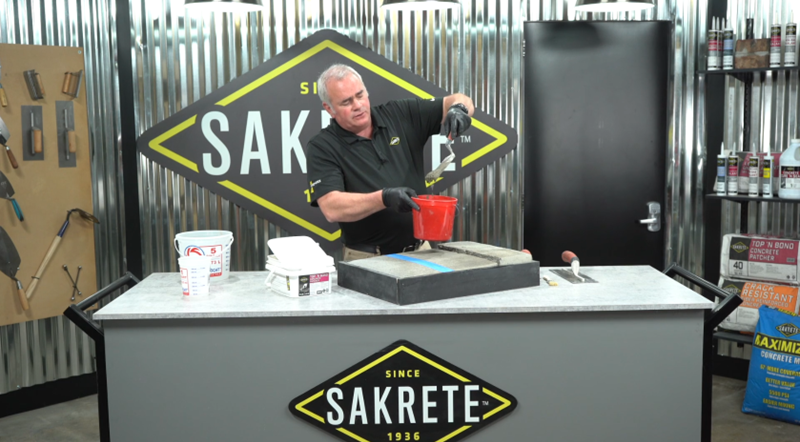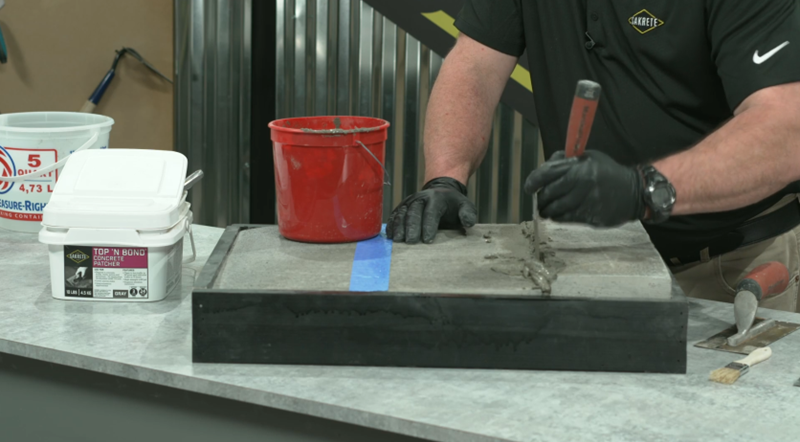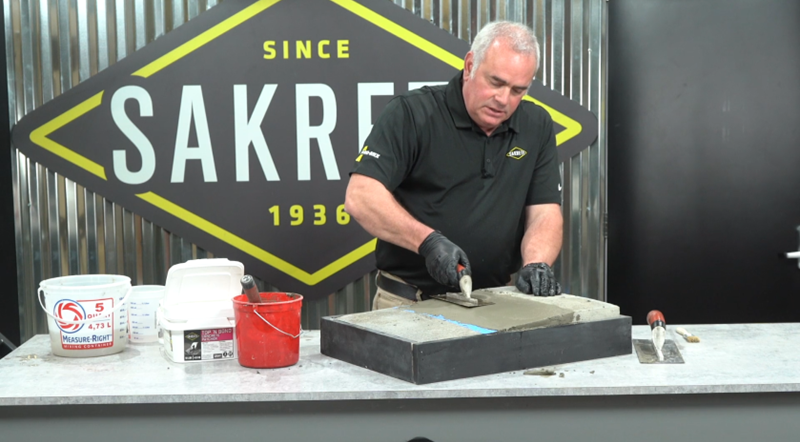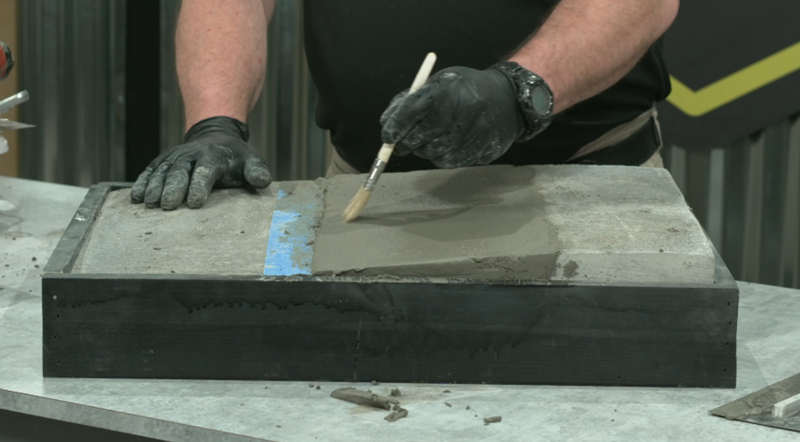Products Used
Tools Needed
- PPE – N95, nitrile gloves, eye protection
- Steel finish trowel
- Hand sprayer
- Margin Trowel
- Mixing bucket
- Brush or broom
Project Level: moderate
Project Length: 1 hour
Sakrete Pro Tips | Repairing an Uneven Slab
Uneven concrete slabs are a pain and should not be ignored. They are a trip hazard, sending people to the hospital and unattractive to the eye. Uneven concrete occurs due to soil settling, erosion, improper installation, tree roots pushing up on the concrete, excess weight, ground movement, and extreme weather to name a few.
A great solution, also very cost-effective and a speedy way to solve the problem, is to do an uneven slab repair. Keep in mind this is only a band-aid and there’s a chance the concrete could return to its uneven state. With that in mind, here’s the breakdown on how to repair an uneven concrete slab.

Project Tip: Always remove any loose materials and clean the slab before starting a repair.

Project Tip: Mix to a 4:1 ratio for a stiffer, more shapable mix.


Project Tip: Don't overwork the material. Place, trowel and leave it alone!


Project Tip: Always have a curing plan in place for the repair.
Enter An Email To Send These Results.